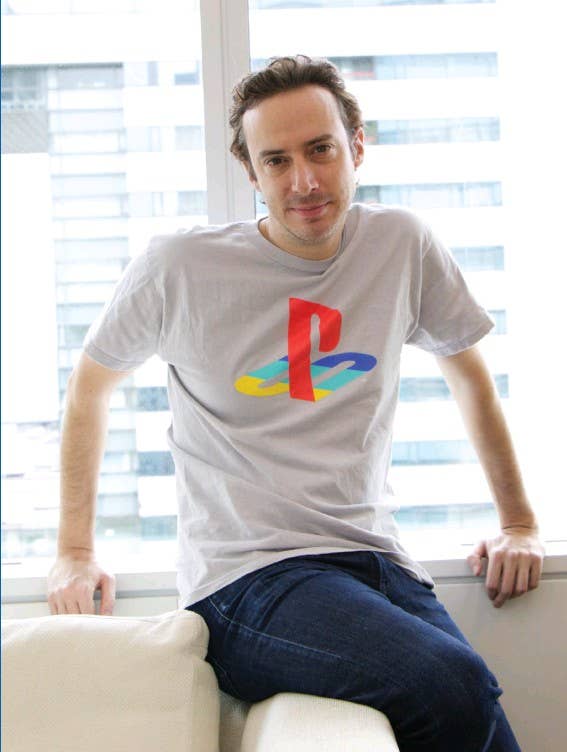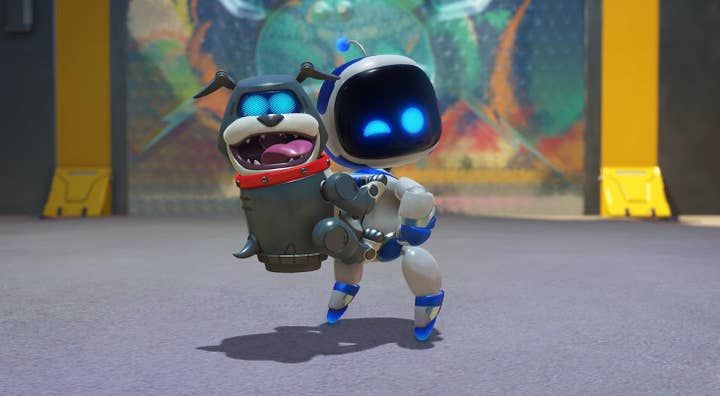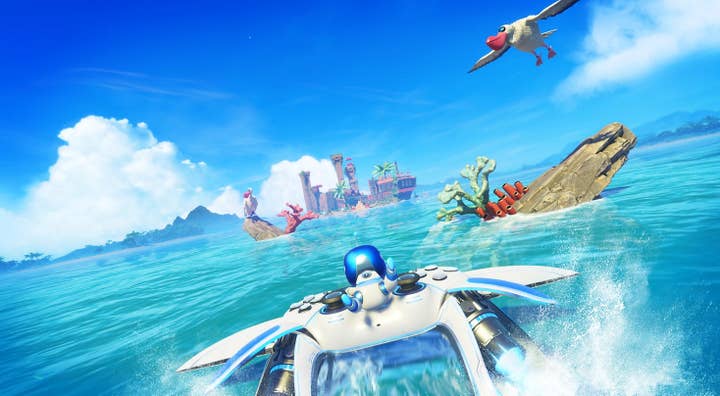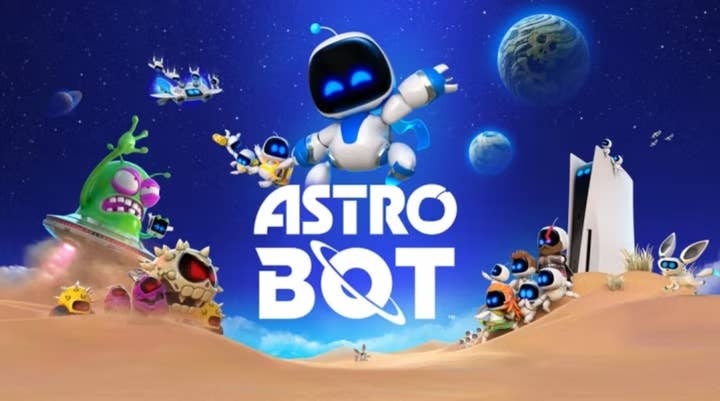Inside the making of Astro Bot
We find out how PlayStation's Mario-beater was built
During Summer Games Fest last week, I frequently asked our friends in the games media what they've seen or played that's impressed them. We don't get to play as much as we'd like at GamesIndustry.biz, and so it's useful intel to hear what the journalists think.
In almost every conversation, one game would come up again and again: Astro Bot.
Thankfully, that was one we did play. The 3D platformer is the follow-up to Astro's Playroom, a small game that's included with every PS5 and showcases the capabilities of the console's DualSense controller. The quality of Astro's Playroom prompted Sony to invest in the developer behind it, Team Asobi, and now they're building a full follow-up, which launches this September.
When we first caught up with Team Asobi back in 2022, it shared with us how the studio operated. There is a core team working on Astro Bot, with a smaller group prototyping new ideas outside of the game.

"They are not bound to platforming," explains studio and creative director Nicolas Doucet. "That was on purpose so they don't feel limited. Otherwise, your brain puts in all sorts of restrictions."
Back in 2022, Asobit was around 60 employees, with Doucet expecting it to grow to 100. Instead, they've just added "a handful more" in the two years since.
"We've kept it quite tight," he says. "Even though this game is obviously bigger, it really comes down to people knowing the game well. It's a good size."
During our previous interview, we touched upon the way Asobi makes its games. They come up with a wealth of ideas, assigns people to them, then gets everyone together after two weeks to showcase, play and review the work.
"We do that right until the end," Doucet tells us. "Now we are in the final, final phase in the game, we replay so much everyday that it's less of a necessity. But it's really needed as we're finding our way. It means everybody keeps track of where we are, but also has a chance to showcase two weeks of work and see people's reaction. A lot of what we do are bite-sized moments of humour and maybe interactive objects, like a toy. They don't take time to make, it's just a large amount of individual pieces. [These check-ins] means you can check you're on the right track, and you're also spotlighting your own work, which can be a powerful motivation."
These meetings feature all 60 employees and last about two and a half hours. An artist might be showcasing several 3D models, or several pages of storyboarding, while an animator goes through multiple animations.
"For a programmer, it might be a prototype," Doucet continues. "It wouldn't be inside the game directly yet, but it would be in a little room that they built for themselves. So in the [Summer Game Fest gameplay demo], you have that bit where the bulldog is on your back and smashes through things. Well in two weeks, a programmer might have the first prototype of that. It won't be a bulldog, probably just a rocket. The idea is to make the gameplay feel good and you can go around this white room and smash things."

After these meetings, the team gives their opinions and decisions are made over what to do next.
"Usually it's quite obvious when something is going well. You can gauge it from the reaction of the team. I watch people a lot, because when you're talking about humour, sometimes we have different sensitivities to something that might be funny. And if you see people finding something funny… I tend to put my own feelings aside. It's just one person's view. If the whole group is having a moment where they feel something is really great, that's a good gauge.
"And for things that don’t go well… at the end of the review, everybody gets to say one thing they enjoyed, and one thing that should be improved. And that usually highlights trends towards what is popular and what isn't, and out of that we take actions for the next two weeks."
My mind immediately went to what happens when something someone has spent weeks or months building ends up not impressing the team and cut from the game.
"There are features in the game, even entire levels, which take a good amount of time, several weeks, and we are like: 'You know what, it feels like a double of that other level. And to finish it will be a big investment, and the return on that investment for the player is almost zero, so let's not do it'," Doucet admits.
"With the adaptive triggers and haptics, we really went to town"
"Of course, when having those conversations we need to be polite and respectful. But fundamentally, everyone understands that it always come from the players' benefit point-of-view. When you have your level canned, you might go home feeling not so good, but the next day, you'll always be working on something that interests you. As long as we can keep that going, I think it's fine. Putting ego to the side in general, and this is valid for everyone, is probably the best way to have a sane positive mindset.
"Also, there is always the prospect that you're cutting something that could be reused in the DLC or a sequel. There is always that hope."
Indeed, Asobi is meticulous when it comes to archiving all of the ideas that end up not making it into the game.
"Our ability to archive is really important," Doucet says. "In the first year of a project like this, you do a lot of tests. Second year, you really build the game with all the tests that you did. And then the third year you are polishing everything. Roughly speaking that is how it goes. That means, by the time we finish, the exploration part was a long time ago. And there is a risk that we will forget a lot of stuff.
"Also, some of these ideas are running on old versions of the game, which we cannot run anymore. So being able to go back and have this archive of good ideas, it is something we realised is really important. Otherwise, you end up re-inventing the wheel, or worse, forgetting about an amazing idea that we had that didn't fit for X or Y reason.
"It could just be confidence at that time. Or maybe there was just more interest elsewhere. And if your expectations drop a bit, you might allow something that you previously rejected back into your thinking, and from that you get a genius idea."
This is the development process that has led to the demo we played in LA last week, which was crammed full of ideas, and with gameplay that feels as good as the very best platformers.
Yet for all the inevitable comparisons to Nintendo's platform games, this is distinctly a PlayStation title. On a superficial level, the game is filled with PlayStation iconography and characters. This is one thing that has been brought across from Astro's Playroom, and Doucet admitted there was some reservations around doing the same thing again.
"We thought… if we lean too much into PlayStation, are we not allowing Astro be its own thing? Will we know if he can stand on his own feet? So the first thing was to prototype all these ideas in the Astro world only. But then we realised, if you're a fan of PlayStation and Astro's Playroom, which had all these things in it, and then the next game didn't… I'd be disappointed, honestly."

So the team decided to do it again, but this time they went further, with over 150 characters, including Astro versions of Kratos (God of War), Drake (Uncharted) and Aloy (Horizon), to find and collect.
"It is a bit of a geek dream," Doucet says. "They're not just characters, they have meaning and are very close to our hearts. When you grow up with a game, it's not just a game, it was part of your life, which means there is an emotional attachment. So hopefully everyone will find their favourite ones."
The characters aren't named, but their designs and descriptions – written by Dan Maher – should prove enough to work out who they are. The game does poke fun at the characters, as is the nature of Astro Bot's humour, and Doucet says that the other PlayStation studios were very receptive to this presentation of their IP.
"There is a place where you can collect these characters, a museum, and you can punch them to get a funny reaction," Doucet says. "And those reactions really go deep into the things they did in their games. So we are always trying to be very respectful, but also taking the piss and being funny with those IPs.
"The other studios have really embraced it. There hasn't been anything difficult. A lot of these IPs have quite dramatic stories with deep characters. And we're making them funny, so Kratos gets angry, but it's kind of cute angry. And there has been a real acceptance to that. I was thinking this was going to be really complicated and administration heavy. But it was really smooth sailing."
"There are so many things that are bound to the essence of PlayStation with this game, that it is difficult to imagine it elsewhere"
The other element that makes this distinctly a PlayStation game is how Astro Bot, like with Playroom, leans heavily on the features of the DualSense controller. Doucet says they've gone further this time and highlights the sponge concept as an example.
"That idea came from these isolated demos we were doing outside of Astro," he explains. "We were looking at the kind of expression we can do with the adaptive trigger, and we came up with a sponge made of water, and when you squeeze the water out, it then becomes light. You can program the trigger to have more or less resistant. We did this prototype, which was just a sponge on the screen you could squeeze, and it felt really good, so that informed a part of Astro.
"There is also another feature in the game called 'feel the wall'. You can see a gold wall and Astro can run his hands against it, and you can feel the change of texture in the DualSense as he goes from smooth to rough and then smooth again. Then you go back to the rough part, push it, and it's a secret passage. It's something kind of magical. You've seen it before with things like Indiana Jones. It could be done with normal vibration, but it would be a bit mundane, and with the DualSense you can really feel the smooth and rough."
However, there are some parts of the controller the team has scaled back on compared with Astro's Playroom.
"With Astro's Playroom being a tech demo, we wanted to use every feature [of the controller]. So you'd have the platforming, then it would go to a minigame, then back to platforming. It was separated," Doucet says. "But this time, it is all blended together. All the new [powers] support the fundamental jumping around. That means we are doing less with the touchpad, because using the touchpad means your fingers are coming off the jump button and it becomes a clunky way to play. But with the adaptive triggers and haptics, we really went to town."
And indeed, it was this that seemed to excite many of the journalists we spoke to in Los Angeles. In an era where most games, even first-party games, have been built so that they can be played across all sorts of devices – mobile, consoles and PC – it's exciting to find something that has been very purposefully created for one platform.
Doucet concludes: "Very often we have this conversation. There are so many things that are bound to the essence of PlayStation with this game, that it is difficult to imagine it elsewhere. It is really built for PlayStation."

